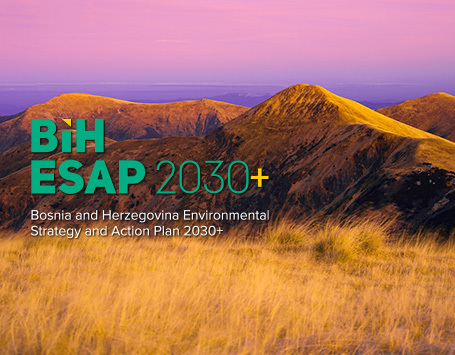The second round of meetings of the working groups of the BiH ESAP 2030+ project, out of a total of six planned, was held in late October and November 2020.
Respecting the prescribed measures to hinder the spread of the COVID 19 virus, the planned project activities and meetings were held online this time as well.
During the meetings, participants from the governmental, non-governmental and private sectors, as well as the academic community from the levels of BiH, FBiH RS and BD BiH finalized the identification of legal, technical and institutional challenges and measures for each of the 7 thematic fields (Water; Waste; Biodiversity and Nature Conservation; Air quality, Climate Change and Energy; Chemical Safety and Noise; Resource Management; Environmental Management).
Comments from the WG on Chemical Safety and Noise
Melina Džajić Valjevac, a leading expert in the field of Chemical Safety and Noise, underlined that the second round of meetings was marked by active and productive work and contribution of participants, and that it was an excellent opportunity for new members of working groups to get acquainted with other members and results so far.
“Chemical safety and noise are completely new topics of strategic planning for institutions at the levels of BiH, FBiH and BD BiH. A lack of legislative framework, dispersion and unclear competencies of institutions, insufficient capacity of decision-makers, widespread ignorance of risks and negative consequences of noise, and use of chemicals and products containing dangerous chemicals are the challenges that have been identified by the members of working groups. Importers and distributors of chemicals do not have equal conditions for the trade of chemicals throughout the territory of BiH. Due to all of the above, the residents are not adequately protected when it comes to exposure to noise and the chemicals they use,” said Džajić Valjevac.

Meaningful participatory methods
As stated previously, the project aims to have a participatory approach throughout the whole project period. This means that we do our best to facilitate the inclusion of many different types of stakeholders, to voice a range of viewpoints. It is a way of collecting data and knowledge about environmental problems and their solutions. Participatory methods are widely adopted in policy-making, in many parts of the world.
The ultimate goal is that, in the decision-making processes connected to the ESAP, these viewpoints are incorporated. An immense benefit is that participants feel more ownership of the full process and, in the end, of the ESAP document itself. This ownership and participation usually open up for better implementation of the strategy.
Due to the pandemic, we have had to adjust the approach and ensure active participation virtually. This has been a challenge, but we have managed to keep a high level of participation using the alternative approach of online meetings and online collaboration tools.
What happens next?
The next, third round of working group meetings, is planned for the first quarter of 2021. Working groups will reconvene and discuss qualitative or quantitative information about the current situation (e.g. ”the current Green House Gases (GHG) emissions are XX%”) and will aim at setting targets (e.g. ”that by 2032, the GHG emissions from energy production are reduced by XX%”) for the next 10 years for every thematic area.
In the meantime, the project is holding jurisdiction group meetings (assitant minister level) and planning the project’s Steering Board meeting (minister level) to report on progress made and next WG rounds coming up.







